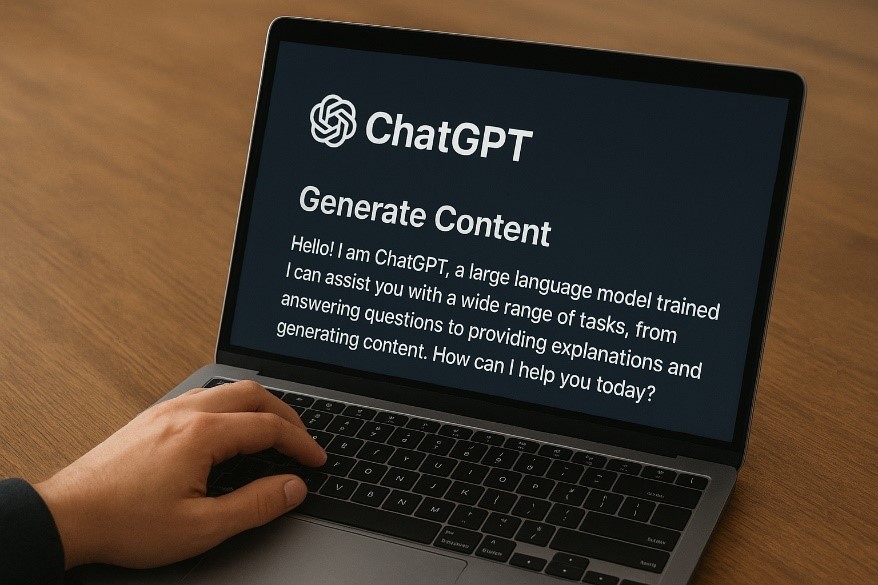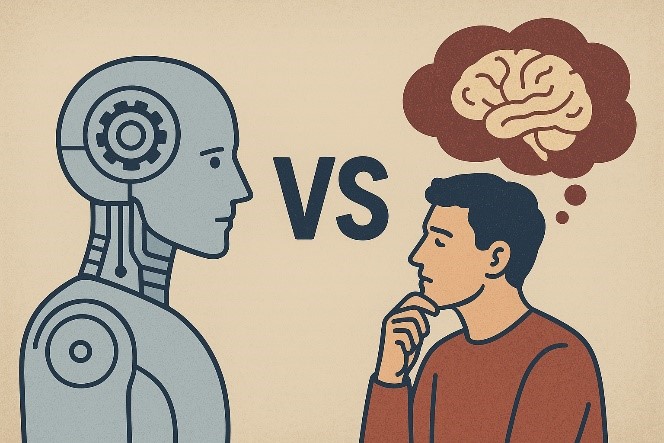Every content you see on the internet has now incorporated some kind of AI in it. In the beginning, AI often gave inaccurate information, and the pictures it generated were distorted and borderline creepy. It had yet to learn on how to generate a video. From students using AI-generated content for their academics to AI generated YouTube videos, AI has spread across among all domains. As a result, AI-generated content has now become a trend that everyone seems to hop on. Challenges and impacts of AI-generated content are often overlooked and undermined. This blog aims to create awareness among the readers of the challenges and impacts of an AI generated content and how to spot a content produced by AI.
What is an AI-generated content?
Artificial Intelligence generated content (AIGC) is any type of online content- a text, image, audio or a video that have been created by AI with the human input of detailed prompts such as topics, keywords and phrases. The current most popular AI tools for content generation are Chat GPT for general, Canva for graphic design, ElevenLabs for high quality, realistic speech and voice cloning and Synthesia for AI avatar-based videos.

Where can AI-generated content be used?
The following domains can use AI generated content:
1.Education
For students, AI can understand their learning style, performance and pace and tailor content that could help each student thrive at their own speed. For teachers, AI could generate personalized quizzes, manage student records and create customized study plans allowing teachers to focus on interacting with each of their student.
2. Marketing:
AI for marketing can generate blog posts, creative ads, marketing emails and product description that are customized according to the marketers saving them time, bringing engagement from the audience and being cost effective.
3. Media:
AI could help add subtitles or dub educational content, film or videos in different languages and reporters could swiftly create summaries and news reports. AI can also compose music in your style and taste.
4. E-Commerce:
AI analyzes customer behavior, searches and purchase history to generate product recommendation preferred by the potential customer increasing product interaction and engagement. AI chat box could ensure 24/7 availability for the customer’s queries, leaving the employees to focus more on the complex issues and helps improvise shopper’s experience.
Impacts of AI-generated content
AI generative content can be favorable in several ways.
1. Time efficient
The biggest benefit of AI generative content is time efficiency. While humans take ample amount of time to research and write, AI can generate a work within minutes, or even a couple of seconds and is available 24/7. This gives the writers a chance to pour their focus on the creative and strategic aspect of the topic, saving them time.
2. Cost effective
High quality Content Writers generally charge quite a lot of money for creating precise and high-quality article. Companies instead have the option to generate content from AI tools that can cut their production cost but also produce the article they require with few simple steps and up to their preference quickly.
3. Writers Block
There are times when writers often fail to produce an idea and write a content because they are in stress or due to lack of inspiration. This is where AI can step in and help writers overcome writer’s block. AI could generate detailed ideas, key points and an outline of the content for inspiration.
4. Personalized Preferences:
AI analyses by searching the whole algorithm and produces content that could be catered up to the creator as well as tailored to the preferences of the general audience. This also helps in an effective SEO by generating keywords specific to the content. And by using these keywords, AI can ensure the content created by the writer could appear higher in ranking of the search engines.

Challenges of AI generated content
While it seems that AI has a lot of positive sides to it, the drawbacks of it are often overlooked. These are the challenges AI generated content have:
1. Restricts Creativity:
Todays world is depended on AI tools even for the simplest tasks. Unknowingly, humans don’t realise that while their content is being curated, with each step their creativity is slowly losing its touch. AI doesn’t offer fresh new ideas, it keeps on recycling what is already available. We will continue to lose our creativity as long as we are heavily relying on the heavy usage of AI.
2. Offers no human touch:
Humans engage with and share content and articles that they relate to. Studies claim that around 50% of customers can distinguish AI-generated content. Although AI can quickly generate high quality content, it does not have the emotional capabilities of a human. It works on facts and the content will be generic and ‘boring’. For an emotional impact, a writer needs to devote their time to give “soul” to the story, so it reaches to the audience.
3. Incorrect information:
Reading the AI generated content might seem legitimate at the first glance, but with the proper research one can find the inconsistencies of the information. AI often produces inaccurate information, which can be misleading to the readers. So instead of relying full on AI tools, you can use the outlines AI provides and do your own research to solidify the facts.
4. Bound to flag Plagiarism
Since AI produces content by scanning the existing information on the internet, it can provide duplicating content from the original. This can flag plagiarism and copyright issues. Companies or people can sue you for ‘stealing’ their content.
How to spot an AI generated content?
Have you ever read something and the first thought that comes into your mind is “What did I just read?”, that most likely means you have stumbled upon an AI generated content. There are some sentences that just screams that it has been written by a robot, when the sentence is inconsistent and losses a line of thought. Sometimes, AI goes off topic and generate content, totally unrelated to the topic and ends up making zero sense.Some sentence or phrases just keep on repeating, the human brain feels déjà vu and is quick to catch on to it.
Does the writing feel basic, generic and bland? And uses the most perfect grammar? There’s a high possibility of a chance that a human has seeked the help of an AI. Humans tend to bring emotions in their writing and have typing errors. AI produces none of that. The over use of jargons and filler words also point towards content generated by AI. Look for citations. Citations offered by AI often lead to wrong references and are unreliable. If something feels off with the overall content, trust your guts, odds are that it was made by AI.
To sum it up
AI-generated content is a recent trend and there’s no sign of it stopping anytime soon. We have been so used to using AI for everything that a sudden cut off, is not possible. At the beginning, AI seemed to help people, but with time, the impacts of AI-generated content has started to show up. Therefore, it’s wise to be always updated on the latest AI trends and use it in a smart and effective way without limiting our natural capabilities.
